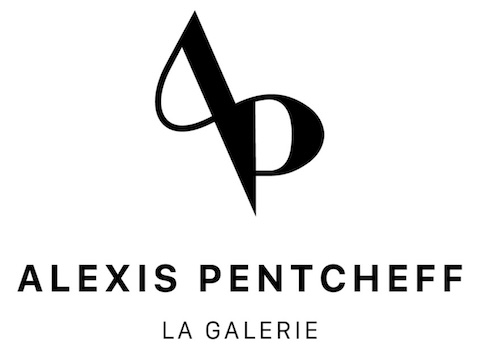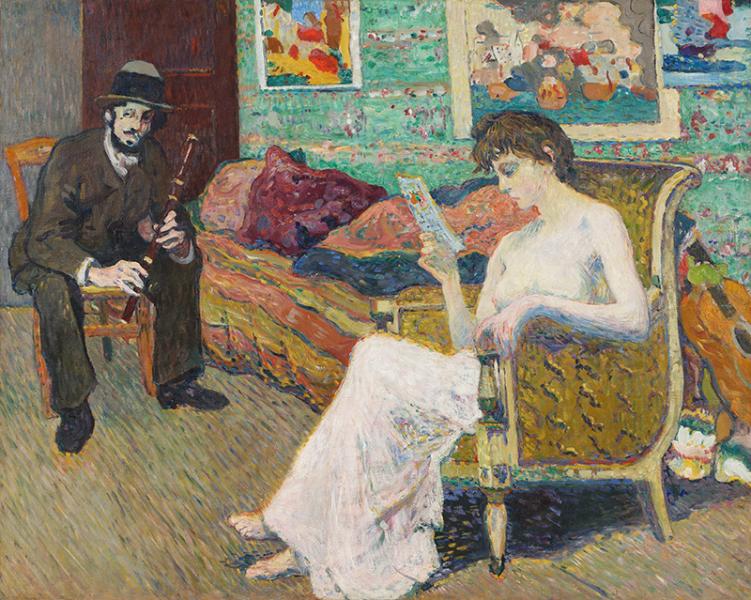Le joueur de flûte, portrait de Georges d'Espagnat, 1895
Oil on canvas
129 x 160 cm
Provenance:
Galerie Maurice Chalom, Paris
Private collection, Dallas
Wildenstein & Co., New York
Private collection, New York, since November 1971
Exhibition:
Salon d’Automne, Retrospective Exhibition of Works by Louis Valtat, Grand Palais, Paris, October–November 1952, no. 1477 (illustrated p. 36 of the catalogue).
Certificate of inclusion in the catalogue raisonné of the work of Louis Valtat, currently in preparation by the archives of the association Les Amis de Louis Valtat.
D’Espagnat by Valtat: a musical portrait of friendship
In 1895, Louis Valtat painted a moment of intimacy that goes beyond a simple portrait.
On the left side of the canvas, dressed in a dark suit, his friend the painter Georges d’Espagnat sits, holding his flute. In the foreground, drawing the light on her half-naked body and pale skirt, a young woman reads a musical score with concentration.
Behind them, paintings hanging on the wall remind us that we are in the artist’s studio.
Nothing is fortuitous. This canvas is conceived as a metaphor for creation, where the score becomes the double of the painting Valtat is composing: a visual text transposed into sounds of color. Music and painting echo one another like twin arts, each finding its harmony through rhythm and vibration.
The work also illustrates the importance of artistic networks in Paris in the 1890s: friendship, reciprocal portraits, collaborations. Georges d’Espagnat (1870–1950), a friend of Bonnard, Vuillard and Renoir, shared with them an intimate sensibility.
From 1895 onwards, he moved in the same circles as Valtat, notably at the Revue Blanche, and the two of them exhibited within the same networks at the turn of the century, at Durand-Ruel as well as at the Académie Julian.
Their closeness is well attested: d’Espagnat stayed “at Agay with Valtat” in February 1901 (cited by J.-D. Jacquemond, 1990), and the Museo Thyssen recalls his visit to Renoir in Cagnes “in the company of his friend Valtat.” These biographical milestones reinforce the reading of a real and lasting fraternity, which this painting brings to life.
An invisible triangle emerges between the three figures — the painter, the musician-model, and the muse. It encapsulates the ambition of this generation: art is not a monologue but a dialogue — between friends, between arts, between the visible and the invisible.
This painting tells of a fraternity of artists at a pivotal moment. Nothing has been documented, no letter sheds light on it.
But it is precisely this silence that gives it its power: the canvas speaks in their place. It conveys the hope of a painting which, like music, seeks less to tell a story than to make the senses vibrate. A youthful, heralding work, it already foreshadows the chromatic and decorative explorations that would lead Valtat, a few years later, towards the daring innovations of Fauvism.

